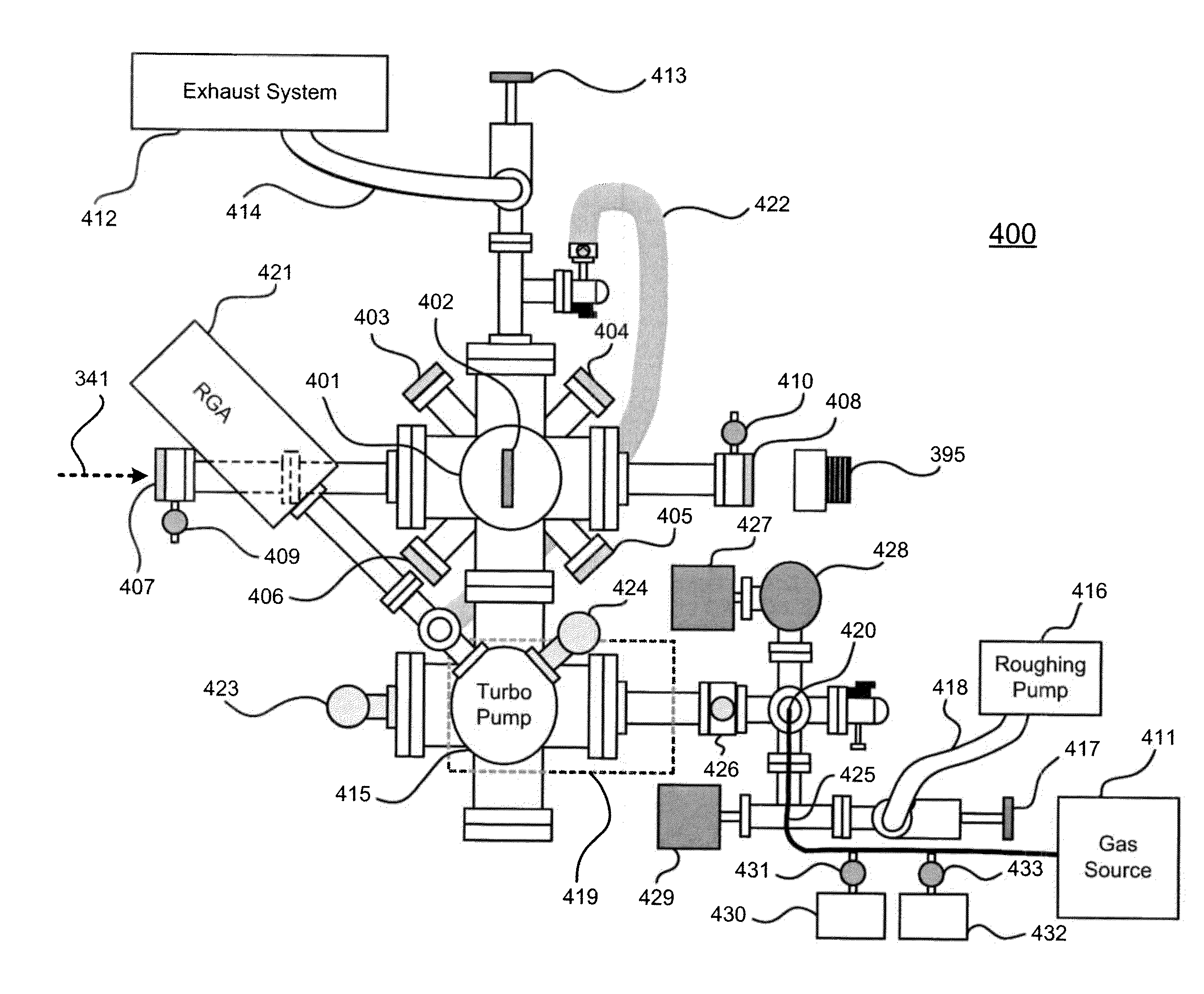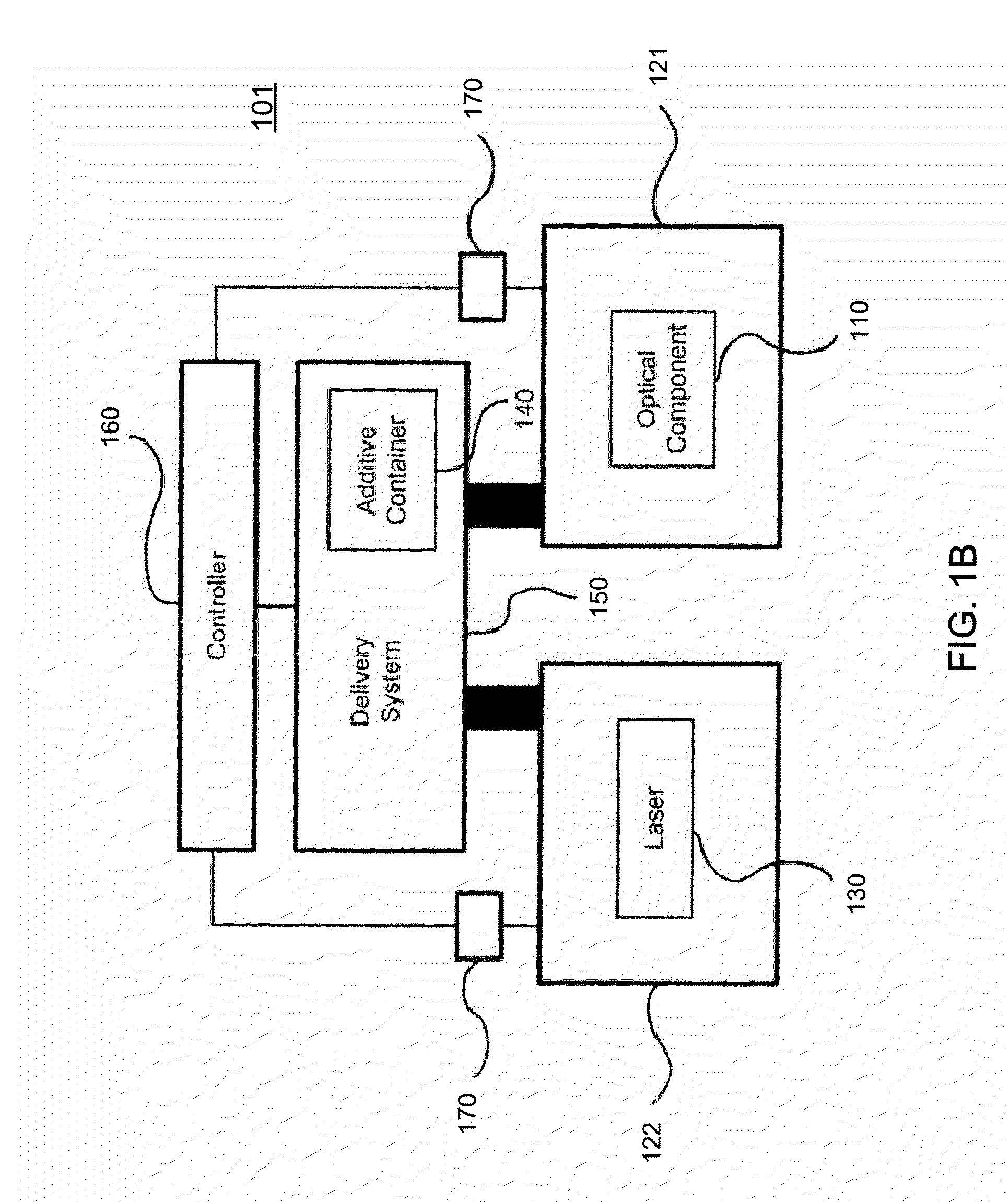Systems and methods for preventing or reducing contamination enhanced laser induced damage (c-lid) to optical components using gas phase additives
a technology of enhanced laser and gas phase additives, which is applied in the field of preventing or reducing contamination laser induced damage to optical components, can solve the problems of longer life of optical components, achieve greater affinity for optical components, prevent or reduce contamination enhanced laser induced damage (c-lid), and reduce or eliminate the effect of optic degradation
- Summary
- Abstract
- Description
- Claims
- Application Information
AI Technical Summary
Benefits of technology
Problems solved by technology
Method used
Image
Examples
example
The functionality of devices 100, 101, and 102 and method 200 for reducing C-LID to an optical component in a housing may be illustrated by way of Example as described below.
1. Experimental Set-Up
FIG. 3 is a schematic view of C-LID test apparatus 300, which may be used to measure Laser Induced Damage Threshold (LIDT) and the extent of C-LID on bare fused silica substrates in vacuum conditions. Apparatus 300 includes Helium Neon (HeNe) laser 310, which generates HeNe laser beam 311; mirrors 320, 321, 322; Nd:YAG laser 330, which generates Nd:YAG laser beam 331; dichroic beam splitter 340; energy meters 350, 395; irises 360, 361; high-power laser mirrors 370, 371, 390; telescope 380; and test chamber 400 which, as described in greater detail below, contains the bare fused silica substrate.
The laser beams in apparatus 300 were aligned before entering test chamber 400. HeNe laser 310 emits HeNe laser beam 311. Mirrors 320, 321, 322 reflect HeNe laser beam 311 to an appropriate point on ...
PUM
| Property | Measurement | Unit |
|---|---|---|
| partial pressure | aaaaa | aaaaa |
| diameter | aaaaa | aaaaa |
| diameter | aaaaa | aaaaa |
Abstract
Description
Claims
Application Information
 Login to View More
Login to View More - R&D
- Intellectual Property
- Life Sciences
- Materials
- Tech Scout
- Unparalleled Data Quality
- Higher Quality Content
- 60% Fewer Hallucinations
Browse by: Latest US Patents, China's latest patents, Technical Efficacy Thesaurus, Application Domain, Technology Topic, Popular Technical Reports.
© 2025 PatSnap. All rights reserved.Legal|Privacy policy|Modern Slavery Act Transparency Statement|Sitemap|About US| Contact US: help@patsnap.com



